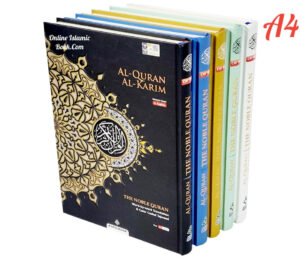Introduction:
In the intricate dance of culture, history, and individual preferences, the world of foods Roberto Maceda Kohatsu Cinematographer and drinks stands as a vibrant canvas, reflecting the diversity and richness of human civilization. From the traditional cuisines that echo centuries-old recipes to the contemporary fusion of flavors and the artistry of mixology, the exploration of foods and drinks is an exciting journey that transcends borders and time. In this narrative, we embark on a 1000-word odyssey, uncovering the tales of ingredients, the rituals of cooking, and the communal joy that comes from sharing a meal or raising a glass.
Diversity in Cuisine:
The global culinary landscape is a mosaic of flavors, textures, and aromas, each region contributing its unique essence to the overall gastronomic tapestry. Whether it’s the spicy and aromatic curries of India, the savory sushi of Japan, or the hearty pasta dishes of Italy, every culture weaves a story through its cuisine. Ingredients native to a particular region, influenced by climate, geography, and historical events, are the threads that bind these culinary tales together.
Ingredients as Storytellers:
In the realm of foods and drinks, ingredients are the unsung heroes, each carrying a narrative of its own. Consider the humble olive, a staple in Mediterranean cuisine. From its cultivation in sun-drenched groves to the careful pressing of its oil, the olive symbolizes the connection between the land and the table, embodying the essence of the region’s terroir.
Spices, too, have played a pivotal role in shaping the history of trade and exploration. The allure of cinnamon once drove explorers across oceans, and the scarcity of saffron made it worth its weight in gold. These ingredients, often taken for granted in modern kitchens, have stories etched into their origins, reflecting the interwoven threads of human history.
The Artistry of Cooking:
Cooking is a form of artistry that transforms raw ingredients into a symphony of flavors. Chefs around the world, whether in Michelin-starred restaurants or humble street-side stalls, wield their skills to create culinary masterpieces. Techniques vary, from the precise art of French culinary traditions to the bold and flavorful methods of Asian kitchens.
In the pursuit of culinary excellence, experimentation is key. Molecular gastronomy pushes the boundaries of traditional cooking, using science to create unexpected textures and presentations. Yet, amidst innovation, the heart of cooking remains in the balance of flavors, the mastery of heat, and the understanding of how ingredients interact to create a harmonious dish.
The Social Ritual of Sharing a Meal:
Beyond sustenance, the act of sharing a meal is a universal social ritual that transcends cultural and linguistic barriers. Whether it’s a family gathering around a dinner table, friends sharing tapas in Spain, or a communal feast in a village square, the act of breaking bread together fosters connections and builds bonds.
Communal meals have the power to celebrate cultural identity, strengthen relationships, and bridge divides. In the cacophony of shared laughter and the clinking of glasses, people from different walks of life find common ground. The dining table becomes a metaphorical meeting place, where stories are exchanged, traditions are passed down, and the simple act of sharing becomes a celebration of life.
The Role of Beverages:
Just as foods tell stories, beverages have narratives of their own. From the ritualistic tea ceremonies in Japan to the conviviality of a pint shared among friends in an Irish pub, drinks hold cultural significance and social symbolism.
Wines, with their nuanced flavors and aging processes, encapsulate the terroir of vineyards and the expertise of winemakers. Whiskeys, distilled over time and often aged in oak barrels, carry the essence of their origins, whether in the smoky peat of Scotch whisky or the sweet caramel notes of bourbon.
Mixology as an Art Form:
In the realm of drinks, mixology has emerged as a distinct art form. Cocktails, crafted with precision and creativity, are a fusion of flavors and aesthetics. The mixologist, akin to a culinary artist, balances spirits, bitters, and fresh ingredients to create libations that go beyond mere refreshment.
Signature cocktails often reflect the identity of a place or establishment. The mojito, with its refreshing mint and lime, transports drinkers to the vibrant streets of Havana. The martini, with its timeless elegance, conjures images of classic Hollywood glamour. Each sip is a journey, an experience that engages the senses and tells a story through the alchemy of ingredients.
Conclusion:
In the grand tapestry of human existence, foods and drinks are the threads that weave together stories of culture, history, and connection. From the kitchens of home cooks to the culinary laboratories of avant-garde chefs, the world of gastronomy is a celebration of creativity, diversity, and shared experiences.
As we explore the flavors of different cuisines and savor the richness of beverages, we embark on a journey that goes beyond mere sustenance. It is a journey that invites us to appreciate the artistry of cooking, the cultural significance of ingredients, and the profound social rituals that center around sharing a meal or raising a glass. In the joyous act of coming together over food and drinks, we find a common language that speaks to the heart of our shared humanity.

